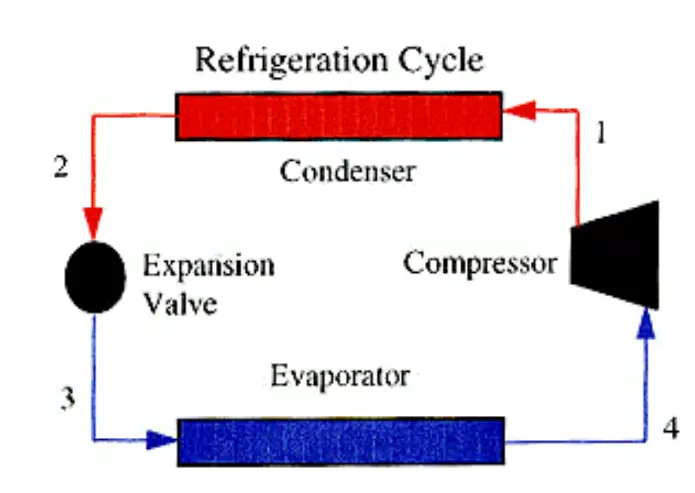Ever heard of an evaporator temperature sensor? If you’re curious about what makes your car’s air conditioning and heating system tick, then you’ve come to the right place. This tiny yet crucial component plays a significant role in HVAC systems, helping maintain a comfortable temperature in automobiles, refrigeration units, and air conditioning systems. Stick around to learn more!

Table of Contents
Types of Evaporator Temperature Sensors
Did you know there are several types of evaporator temperature sensors? Each comes with its own set of pros and cons. Let’s dive in and explore the fascinating world of thermistor-based sensors, resistance temperature detectors (RTDs), and thermocouples.
Thermistor-based Sensors
Thermistors are a popular choice for evaporator temperature sensors. How do they work, you ask? Well, their resistance changes as the temperature fluctuates. But, as with everything in life, there are upsides and downsides to using thermistor-based sensors.
NTC Thermistors
NTC (Negative Temperature Coefficient) thermistors are the cool kids on the block. Their resistance decreases as the temperature rises, making them perfect for evaporator temperature sensing applications. Who wouldn’t want that kind of accuracy?
PTC Thermistors
On the other hand, PTC (Positive Temperature Coefficient) thermistors have a different story to tell. Their resistance increases with rising temperatures. Though they might not be the go-to choice for evaporator temperature sensing, they still have their place in the sensor world.
Resistance Temperature Detectors (RTDs)
Resistance temperature detectors, or RTDs, are another contender in the temperature sensor arena. They work by measuring the resistance change in a metal element as the temperature varies. But are they the best choice for your evaporator temperature sensor needs? Let’s weigh the pros and cons.
Thermocouples
Last but not least, we have thermocouples. These handy little devices generate a voltage based on the temperature difference between two metal junctions. But is this clever trick enough to make them the top choice for evaporator temperature sensing? Only time will tell.
Evaporator Sensor in Cars
Let’s shift gears and talk about the role of evaporator temperature sensors in cars. You might be surprised to learn just how crucial they are for maintaining a comfortable and safe environment for passengers. Ever experienced a faulty evaporator sensor? You’ll know how frustrating it can be. Let’s delve into the nitty-gritty of automotive HVAC systems and evaporator sensors.
Installing and Replacing an Evaporator Temperature Sensor
Ready to get your hands dirty? Installing or replacing an evaporator temperature sensor might seem daunting, but with the right tools and know-how, it’s a breeze. We’ll guide you through the process, step by step, and help you stay safe along the way.
Tools and Materials
Before you begin, make sure you have all the necessary tools and materials for the job. A well-prepared DIYer is a successful one!
Installation Process
Installing a new evaporator temperature sensor? Don’t worry, we’ve got your back. Follow our step-by-step guide to ensure a smooth installation process, and you’ll have your new sensor up and running in no time!
Replacement Process
Replacing a faulty evaporator temperature sensor can be a bit more challenging, but with our expert guidance, you’ll have it swapped out in a jiffy. Remember to follow safety precautions and best practices to ensure a successful replacement.
For more articles on evaporators in refrigeration, click here.
Troubleshooting and Diagnosing Evaporator Temperature Sensor Issues
Got a sneaking suspicion that something’s not quite right with your evaporator temperature sensor? Let’s get down to the business of troubleshooting and diagnosing common issues. We’ll help you identify the symptoms and signs of a faulty sensor and guide you through the diagnostic process using multimeters, oscilloscopes, and other handy tools.
Common Problems
Like any component, evaporator temperature sensors can experience their fair share of issues. We’ll explore the most common problems and help you recognize the telltale signs that something’s amiss.
Diagnosing Issues
Once you’ve identified a potential problem, it’s time to roll up your sleeves and get to work diagnosing the issue. Our step-by-step guide will walk you through the diagnostic process, ensuring you pinpoint the problem with confidence.
Repair and Maintenance
Looking to extend the life of your evaporator temperature sensors? We’ve got some top tips for maintaining and repairing these essential components. Plus, we’ll help you decide when it’s time to repair vs. replace a faulty sensor.
Conclusion
And there you have it! Our comprehensive guide to evaporator temperature sensors has come to an end. We’ve explored the importance of these sensors in HVAC systems, the ins and outs of installation and replacement, and the art of troubleshooting and diagnosing issues. With regular maintenance and accurate diagnostics, you can ensure top-notch performance from your evaporator temperature sensor for years to come. So, what are you waiting for? Go forth and conquer the world of temperature sensing technology!